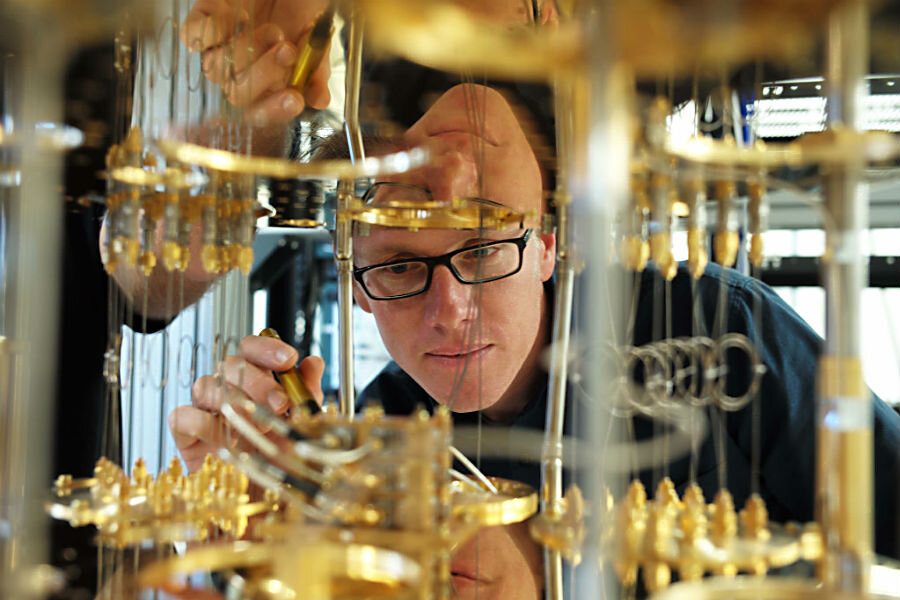IBM wants to bring quantum computing to the masses
Loading...
For the first time, the general public will be able to access previously theoretical quantum computing systems through International Business Machines Corporation (IBM)'s quantum processor on its cloud service.
"This moment represents the birth of quantum cloud computing," IBM Research senior vice president and director Arvind Krishna said in a company release. "By giving hands-on access to IBM's experimental quantum systems, the IBM Quantum Experience will make it easier for researchers and the scientific community to accelerate innovations in the quantum field, and help discover new applications for this technology."
The quantum computing field was opened in the early 1980s and involves the use of quantum bits, or qubits, in place of the traditional binary digits used for modern computing. Qubits are not locked into set states, and have the potential to be the base of much more powerful computers than ever before.
"Quantum computers are very different from today's computers, not only in what they look like and are made of, but more importantly in what they can do," Mr. Krishna said. "Quantum computing is becoming a reality and it will extend computation far beyond what is imaginable with today’s computers."
The new computers are much more complex than current ones as well, taking up a larger amount of space and requiring certain conditions to function properly. Qubits must work around absolute zero, or they won’t return the correct results, and the movement of data within the system makes it hard to keep track of information or store it.
IBM's quantum processor is one of the first functional machines in the discipline, and through its IBM Quantum Experience will allow users to jump in on one of the first major steps in the new wave of computing. Through the IBM Cloud, people can experiment with the technology, run simulations, be taught about the possibilities of the platform, and, in the future, participate in community sharing experiences based around the quantum device.
"It is a beautiful challenge to pursue the path to build the first universal quantum computer, but it requires us to change how we think about the world. Access to early quantum computing prototypes will be key in imagining and developing future applications," IBM Research vice president of science and solutions Dario Gil said. "If you want to understand what a true quantum computer will do for you and how it works, this is the place to do it. You won’t experience it anywhere else."
The IBM system currently operates with five qubits, but a machine running off of 50 to 100 of the quantum information units will surpass even today's best supercomputers, according to IBM's quantum computing group manager Jerry Chow, although more work on managing qubits would need to be done before reaching that point.
"It is a beautiful challenge to pursue the path to build the first universal quantum computer, but it requires us to change how we think about the world. Access to early quantum computing prototypes will be key in imagining and developing future applications," Mr. Gil said.
Users interested in taking the Quantum Experience for a test drive can request an invitation from IBM.






